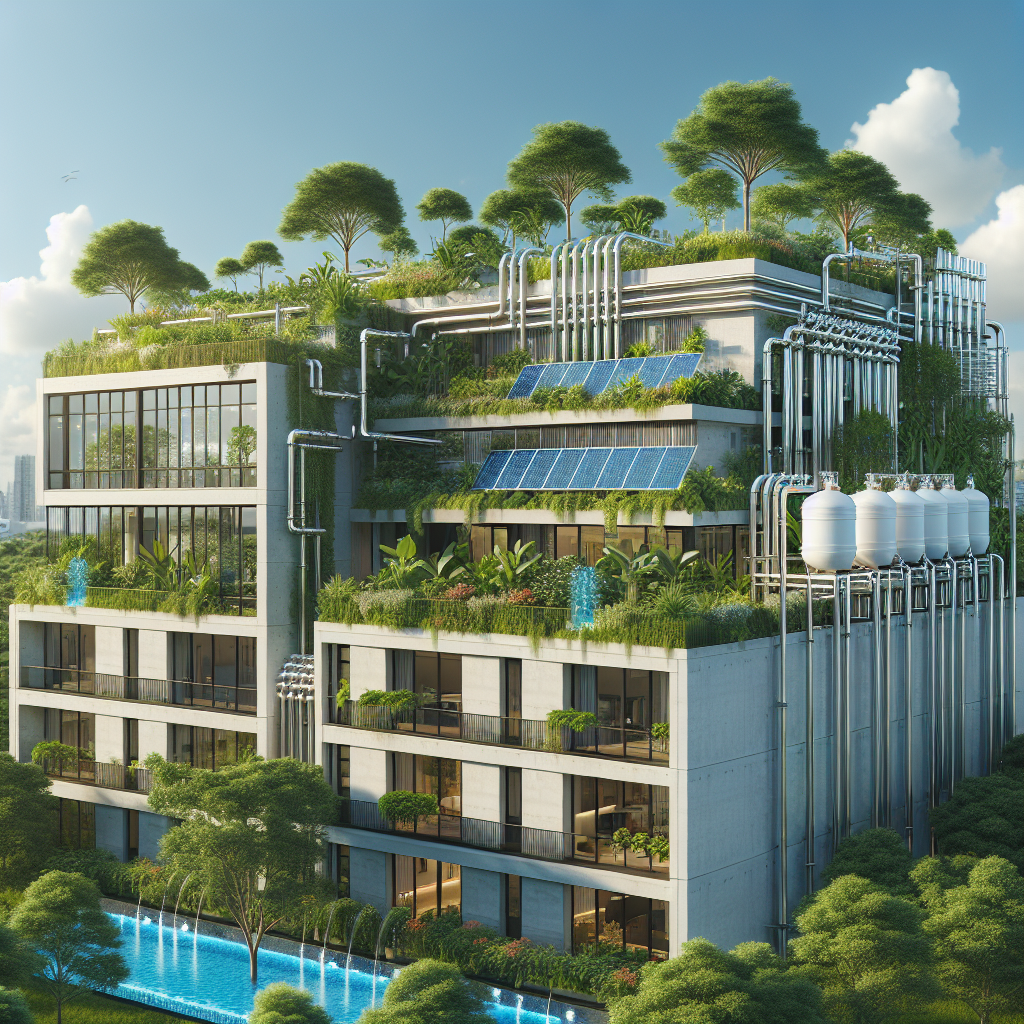The Water-Saving Wonders of Sustainable Construction
In the face of escalating global water scarcity, sustainable construction emerges as a beacon of hope, offering innovative strategies to conserve water. This approach to building design and construction not only addresses the immediate needs of water efficiency but also looks to the future, ensuring that our buildings and communities are resilient, sustainable, and in harmony with the natural environment. The integration of water-saving features in sustainable construction is not just an option anymore; it’s a necessity. This article explores the myriad ways sustainable construction is revolutionizing water conservation and the benefits it brings to the environment and society.
Understanding the Impact of Construction on Water Resources
Traditional construction practices have long overlooked the importance of water conservation, leading to significant wastage and inefficiency. From the excessive use of water in the production of construction materials to the design of buildings that do not optimize water use, the construction industry has been a major contributor to water scarcity. Sustainable construction seeks to reverse this trend through innovative approaches that reduce water use, enhance water recycling, and protect natural water cycles.
The Role of Sustainable Construction in Water Conservation
Sustainable construction incorporates a variety of techniques and technologies designed to minimize water use and promote recycling. These include:
– Rainwater Harvesting: This technique involves collecting and storing rainwater for reuse within the building, reducing the demand on municipal water supplies. Rainwater can be used for irrigation, flushing toilets, and even for washing machines, with appropriate treatment.
– Water-Efficient Fixtures: Low-flow faucets, showerheads, and dual-flush toilets can significantly reduce water usage in buildings. These fixtures are designed to deliver less water without compromising performance, making them an essential component of sustainable construction.
– Greywater Recycling Systems: Greywater, which is the wastewater from sinks, showers, and laundry, can be treated and reused for purposes such as toilet flushing and landscape irrigation. This reduces the demand for fresh water and decreases wastewater production.
– Native Landscaping: Choosing native plants for landscaping can drastically reduce water usage. Native plants are adapted to the local climate and typically require less water than non-native species, minimizing the need for irrigation.
– Permeable Pavements: These allow rainwater to infiltrate the ground, reducing runoff and promoting the recharge of groundwater. This not only conserves water but also helps to prevent urban flooding.
– Energy-Efficient Water Heating: Implementing energy-efficient solutions for water heating, such as solar water heaters, reduces the energy and water wasted in heating water, making the process more sustainable.
Benefits of Water-Saving in Sustainable Construction
The benefits of incorporating water-saving features in sustainable construction are manifold. These practices not only conserve precious water resources but also reduce energy consumption, lower utility bills, and mitigate the impact of buildings on the environment. Additionally, sustainable construction can enhance the health and well-being of occupants by providing a cleaner, more natural living environment. By adopting water-saving measures, sustainable construction also contributes to the resilience of communities, making them better equipped to handle the challenges of climate change and water scarcity.
Overcoming Challenges
Despite its numerous benefits, the adoption of sustainable construction practices faces challenges. These include higher upfront costs, lack of awareness, and resistance to change. However, the long-term savings in water and energy costs, combined with government incentives and growing environmental awareness, are making sustainable construction an increasingly attractive option.
The Future of Water-Saving in Construction
As technology advances and awareness grows, sustainable construction is set to become the norm rather than the exception. Innovations in materials science, water treatment, and building design will further enhance the ability of construction to conserve water. The future of sustainable construction promises buildings that not only save water but actively contribute to the regeneration of the natural environment.
FAQs
Q: What is sustainable construction?
A: Sustainable construction refers to the practice of creating buildings and infrastructure in a way that uses resources efficiently, reduces environmental impact, and promotes the health and well-being of occupants and the community.
Q: How does sustainable construction save water?
A: It saves water through techniques such as rainwater harvesting, the use of water-efficient fixtures, greywater recycling, native landscaping, permeable pavements, and energy-efficient water heating.
Q: Are water-saving features in construction expensive?
A: While some features may have higher upfront costs, they often lead to significant long-term savings in water and energy bills. Additionally, many governments offer incentives for sustainable construction practices.
Q: Can sustainable construction really make a difference in water scarcity?
A: Yes, by reducing the demand for fresh water and promoting the recycling and efficient use of water, sustainable construction can play a significant role in addressing water scarcity.
Q: How can I incorporate water-saving features into my home?
A: Consider installing low-flow fixtures, collecting rainwater for garden use, using native plants for landscaping, and investing in energy-efficient water heating systems. Consulting with a professional who specializes in sustainable construction can also provide tailored solutions for your home.
Sustainable construction represents a critical step forward in the effort to conserve water resources and combat the global water crisis. By embracing the water-saving wonders of sustainable construction, we can ensure a more sustainable, resilient, and water-secure future for all.

